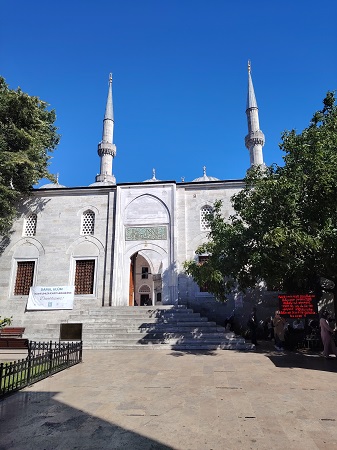
OTTOMAN IMPERIAL MOSQUES
Ottoman sultans or members of the imperial dynasty commissioned these monumental complexes. They were usually constructed as külliye, multi-functional complexes centred on a mosque, surrounded by madrasas, kitchens, baths and other charitable institutions serving the community.
The great imperial architect Mimar Sinan, master architect of the Ottoman Empire for nearly 50 years, designed many of the still-standing külliye in Istanbul. He set the standard for mosque and complex architecture.
Imperial mosques were also built in other Ottoman cities, including Bursa, Edirne, Konya, Amasya, Manisa and even Damascus.
YENI VALIDE MOSQUE
Like several other Ottoman imperial mosques in Istanbul, this mosque also has two names. The sign at the entrance identifies it as the Vâlide-İ Cedid Mosque. But people call it the Yeni Valide Mosque. This dual naming is similar to that of the Blue Mosque, the city’s most famous mosque, which is officially the Sultan Ahmed Mosque.
The Yeni Valide Mosque is in Üsküdar, on the Asian side of Istanbul. I first visited Üsküdar in 2019, during my stay in the city and that was also the first time that I entered this mosque. There were no foreign tourists, only a handful of worshippers.
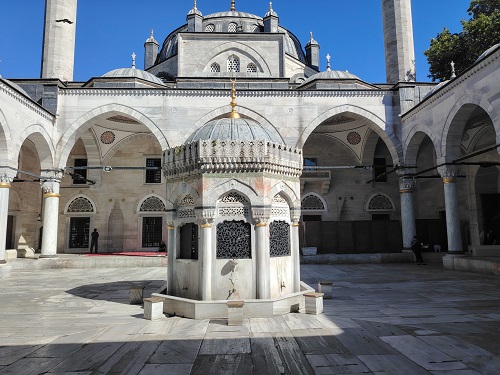
What I particularly enjoy about visiting places like this is the opportunity to discover something completely new. Before that visit, my knowledge of the 18th and 19th century Ottoman history, and especially of this mosque, was virtually non-existent. But I took the time to read about it, so that I could better appreciate what I was seeing.
I also believe that it is important to place such monuments in their proper historical context. Of course, you don’t need to know every detail. Usually, a few key facts are enough. After all, history is vast and it’s impossible to learn and remember everything.
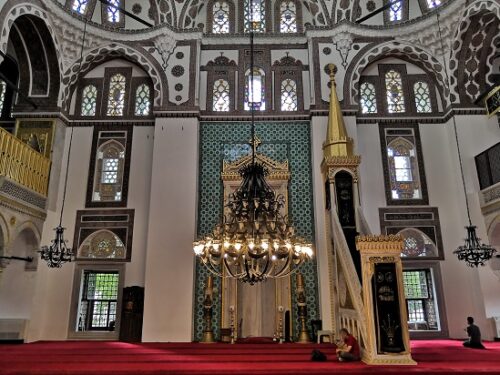
Sultan Ahmed III commissioned the mosque in honour of his mother Emetullah Râbi’a Gülnûş Sultan.
The mosque was completed in 1711 as part of a larger complex which included the mosque itself and also a hospice, an arasta (shops built to provide income for maintenance), a primary school, a fountain in the courtyard, a clock tower and various offices.
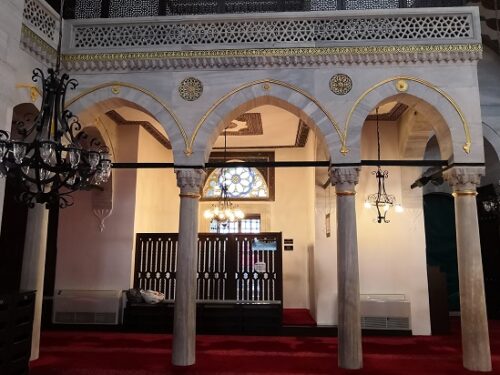
Architecturally, it reflects the classical Ottoman style influenced by the “Sinan school” of religious architecture. In fact, its design closely resembles that of the Rüstem Pasha Mosque.
Interestingly, it is also among the earliest examples of an 18th century trend towards building mosques with taller, narrower domes.
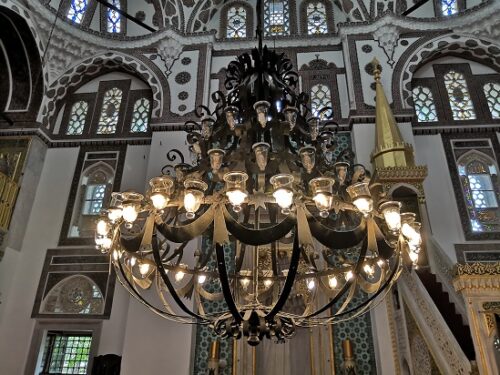
GÜLNUŞ SULTAN
Gülnuş Sultan was the Haseki Sultan (consort) of Sultan Mehmed IV and later became Valide Sultan (queen mother) when her two sons, Mustafa II and Ahmed III, ascended the throne.
She was born in Crete, then under Venetian rule, with the original name Evmania Voria and was of Greek origin. Captured by the Ottomans during the invasion of Crete in 1645, she was only three years old when she was brought to Constantinople as a slave. She grew up in the harem of Topkapi Palace, where she received a thorough Islamic education and eventually caught the attention of Sultan Mehmed IV.
When her elder son Mustafa II became sultan in 1695, she assumed the powerful role of Valide Sultan. She held this position until her death in 1715. At the time of her death, her younger son Ahmed III was on the throne.
This brief history sheds light on the woman for whom the complex was built. As I mentioned earlier, knowing the historical context makes monuments like this much easier to understand and appreciate.
Another fascinating aspect of Ottoman society was the possibility for slaves to rise to extraordinary power. Gülnuş Sultan, once a captive child, become the sultan’s consort and the mother of two Ottoman sultans. However, her rise came after the so-called Sultanate of Women period had ended.
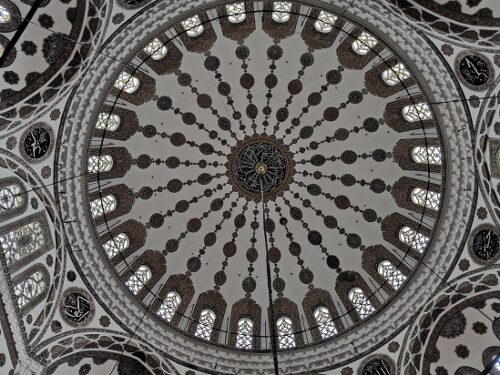
YENI VALIDE MOSQUE – OTTOMAN JEWEL
If you visit Üsküdar, make sure to see this mosque. As noted at the beginnng, it stands right beside the iconic Mihrimah Sultan Mosque, only a short walk from the port.
But don’t confuse it with the Atik Valide Mosque, also in Üsküdar. Built in honour of Nurbanu Sultan, the Atik Valide complex was among the largest of its time in Istanbul. Initially known simply as the Valide Mosque, it later became Eski Valide, Atik Valide or Valide-i Atik Mosque, after Sultan Ahmed III had the Yeni Valide Mosque constructed, to distinguish between the two.
In fact, it’s worth visiting all these mosques when exploring Üsküdar. The Çinili Mosque, dedicated to Kösem Sultan, is also nearby and equally remarkable.
Without doubt, the beautiful Yeni Valide Mosque stands as yet another jewel of Ottoman heritage in Istanbul.
Back to Turkey


